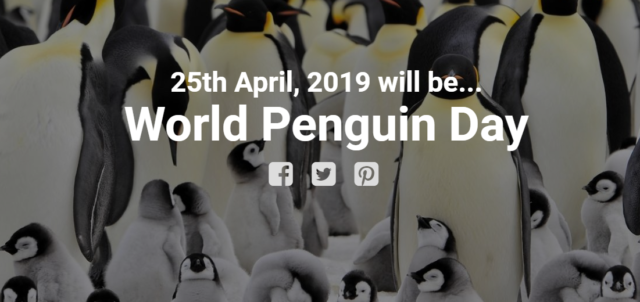
World Penguin Day takes place during the annual northern migration of Adelie penguins, a species of penguin that is native to Antarctica. The Adelie penguins individually migrate north to have better access to food during the winter months and then during the summer, return to the coastal beaches on Antarctica to build their nests.
- The holiday was created at McMurdo Station, an American research center on Ross Island. Researchers noticed that the Adelie penguins began this migration specifically on this day, and they created this holiday as a way to pass the time and give social awareness to these creatures.
- While this holiday takes place during this migration, this holiday celebrates all the penguins in the world and raises awareness for the endangerment of these ice-born creatures. Many of these penguins are sensitive to the effects of climate change, and as a result, many are having to migrate further to find their food, decreasing the population of these penguins as a result.
- Out of the total 18 species that live in the world, 11 of them have been classified as endangered or vulnerable, according to the WWF. They spend most of their lives out at sea, so this holiday encourages people to work towards protecting the waters, as much of the time human activities such as pollution and the burning of fossil fuels.
- All 18 species of penguins are found exclusively in the Southern Hemisphere.
- Emperor Penguins are the tallest species, standing nearly 4 feet tall. The smallest is the Little Blue Penguin, which is only about 16 inches.
- The fastest species is the Gentoo Penguin, which can reach swimming speeds up to 22 mph.
- Fossils place the earliest penguin relative at some 60 million years ago, meaning an ancestor of the birds we see today survived the mass extinction of the dinosaurs.
- All but two species of penguins breed in large colonies of up to one thousand birds.
- If a female Emperor Penguin’s baby dies, she will often “kidnap” an unrelated chick.
- The first published account of penguins comes from Antonio Pigafetta, who was aboard Ferdinand Magellan’s first circumnavigation of the globe in 1520. They spotted the animals near what was probably Punta Tombo in Argentina. (He called them “strange geese.”)
- In the 16th century, the word penguin actually referred to great auks(scientific name: Pinguinus impennis), a now-extinct species that inhabited the seas around eastern Canada. When explorers traveled to the Southern Hemisphere, they saw black and white birds that resembled auks, and called them penguins.
- Chinstrap penguins on Zavodovski Island in the South Sandwich Islands currently hold the Guinness World Record for largest penguin colony, consisting of approximately 2 million penguins.
- Penguins do not have teeth but do have spines on both their tongues and the inside of their beaks to help them grip their prey.
- Penguins cannot breathe underwater; the duration of their dives varies between species, from 7 to 20 minutes.
- The largest penguin fossils found by archeologists have been up to 5 feet tall.
- Emperor penguins huddle together to protect themselves from the wind and cold, they each take turns moving into the safer and warm interior of the huddle.
- Penguins can drink sea water.
- Penguins in Antarctica have no land based predators.
- Everyone imagines penguins on the ice in Antarctica or taking a break on a passing iceberg, but penguins are also found in South Africa, Chile, Peru, Galápagos Islands, New Zealand, Australia and a number of sub-Antarctic islands.
- Adélie penguins are named after the wife of Jules Dumont d’Urville, the French Antarctic explorer (he also named Terre Adelie/Adelie Land after her).
- Penguins are birds.
- Penguins do have knees, you just can’t see them hidden away under all those fluffy feathers. They don’t even have particularly short legs, so why do penguins waddle? Scientists think it’s because penguin legs have evolved to help them swim more efficiently, which has resulted in them being set further back on the body than you might expect. That makes walking more difficult, and the classic penguin waddle is the result.
- Penguins lose a lot of heat through their feet and flippers, so they have a highly developed vascular system to minimize this heat loss.
- Scientists can undertake population counts of penguins in inaccessible areas by using high-resolution satellite imagery. They are able to differentiate between birds, ice, shadow and guano (penguin poo).
- Penguins can dive to depths of over 250m, although most dives will be within the top 10m of water. The deepest dive ever recorded is by a female emperor penguin that dived to 535m below the surface!
Sources:












